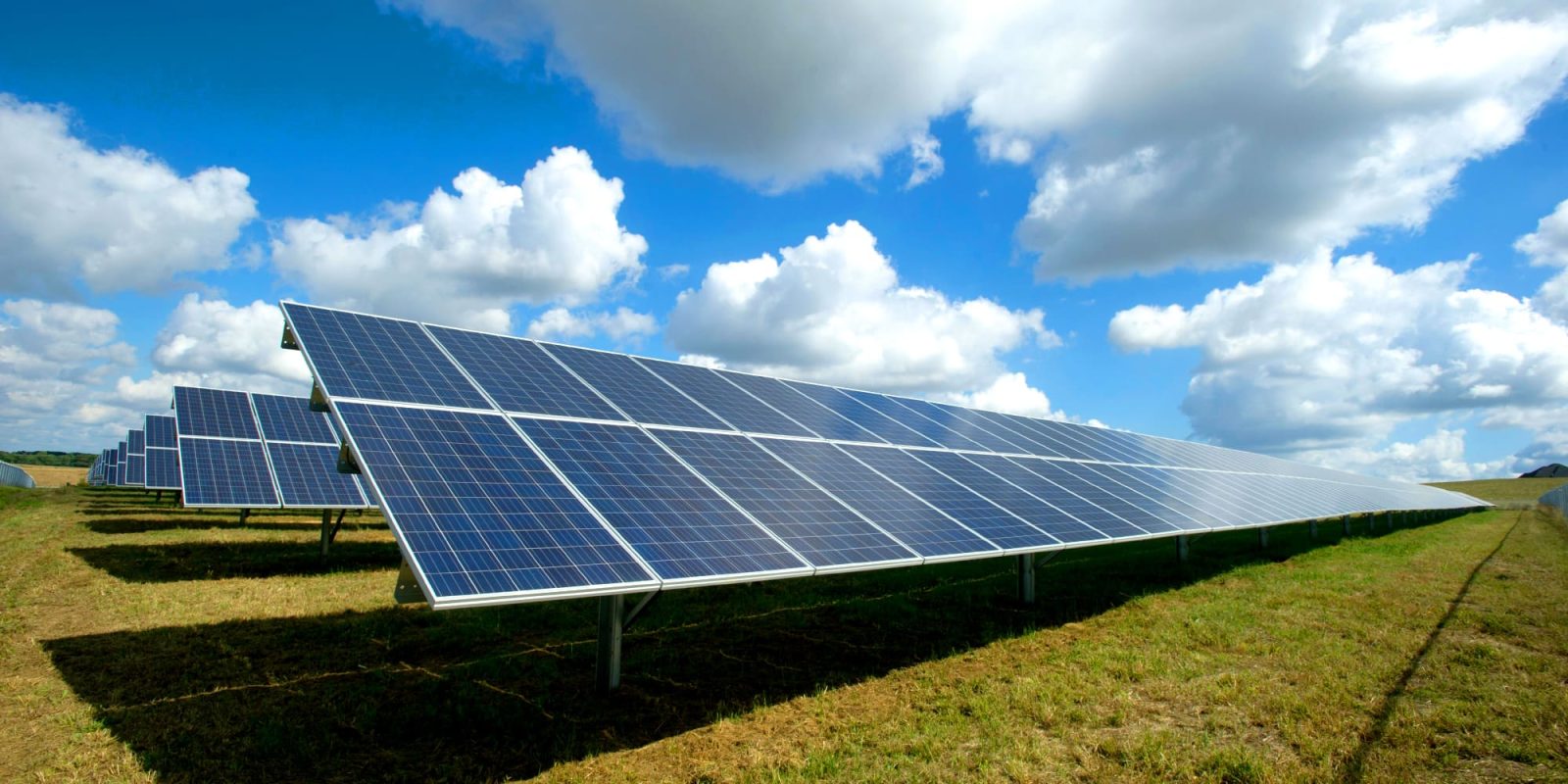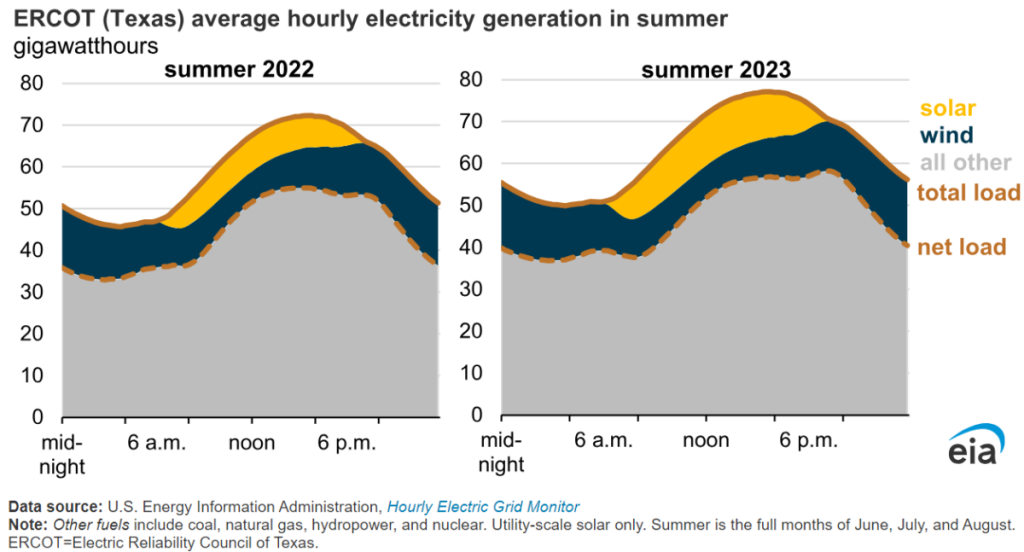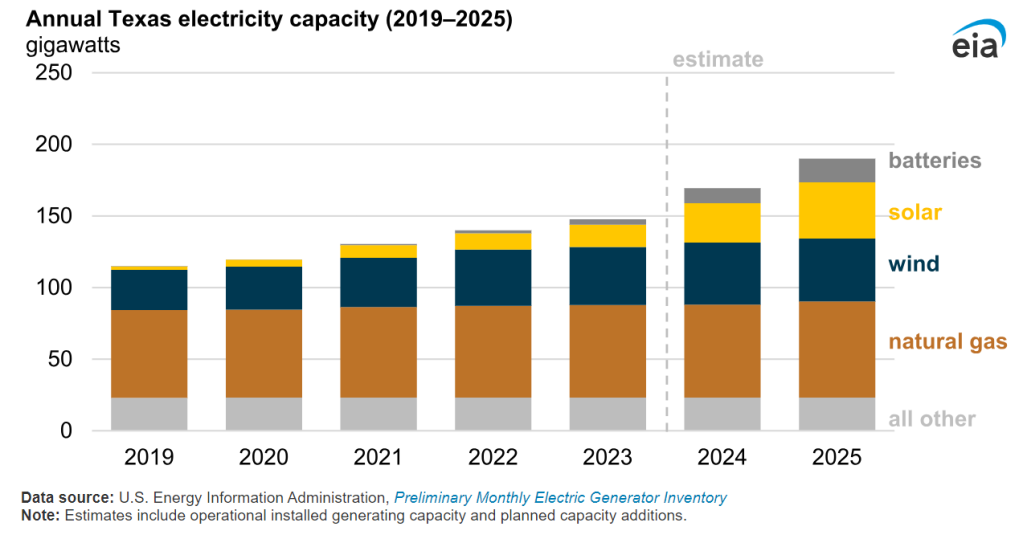
Solar is forecast to displace natural gas in the middle of the day and in the summer on the Texas grid, according to the US Energy Information Administration (EIA).
Texas’s electricity mix of energy sources managed by the Electric Reliability Council of Texas (ERCOT) electricity grid operator changed noticeably in 2023.
Wind is still the largest source of renewable power in the state, but the installation of new wind turbine capacity slowed in 2023. However solar generating capacity additions, often paired with battery storage, grew rapidly.
With more solar energy on Texas’ ERCOT grid, the EIA expects less natural gas use when solar generation displaces it in the middle of the day. It also expects less use of natural gas in the summer when electricity demand is at its highest. Most solar power is generated in Texas by midday.
However, the EIA says natural gas will continue to be a key source of electricity generation in the evening when demand is high and solar generation decreases. Electricity output from natural gas-fired power plants is often greatest between 6 and 8 pm. Wind generation also increases in the evening, limiting the need for additional natural gas generation.

In the summer of 2022, the hourly average solar generation was 3.6 GWh and increased to 5.1 GWh in the summer of 2023. The hourly average wind generation remained unchanged during the same period at 11.2 GWh.

Wind generation for the entire year of 2023 remained essentially unchanged from 2022, whereas solar generation increased by 35% year-over-year. During 2023, Texas produced about 108,000 GWh from wind and about 32,000 GWh from utility-scale solar farms.
The increase in solar power generation in Texas has come as solar capacity has been rapidly added to the grid. In 2023, installed solar capacity in Texas totaled about 16 GW.
Power plant developers are planning to add around 24 GW of solar power net summer capacity to the grid in 2024 and 2025, compared with only 3 GW of additional wind power nameplate capacity during the same period.
In addition, developers plan to add 13 GW of battery storage to the electricity grid between now and 2025. The EIA estimates 3 GW of added natural gas capacity over the next two years.
Source: EIA
Read more: Solar topped coal in Texas for the first time ever in March
To limit power outages and make your home more resilient, consider going solar with a battery storage system. In order to find a trusted, reliable solar installer near you that offers competitive pricing, check out EnergySage, a free service that makes it easy for you to go solar. They have hundreds of pre-vetted solar installers competing for your business, ensuring you get high quality solutions and save 20-30% compared to going it alone. Plus, it’s free to use and you won’t get sales calls until you select an installer and you share your phone number with them.
Your personalized solar quotes are easy to compare online and you’ll get access to unbiased Energy Advisers to help you every step of the way. Get started here. – ad*
FTC: We use income earning auto affiliate links. More.





Comments